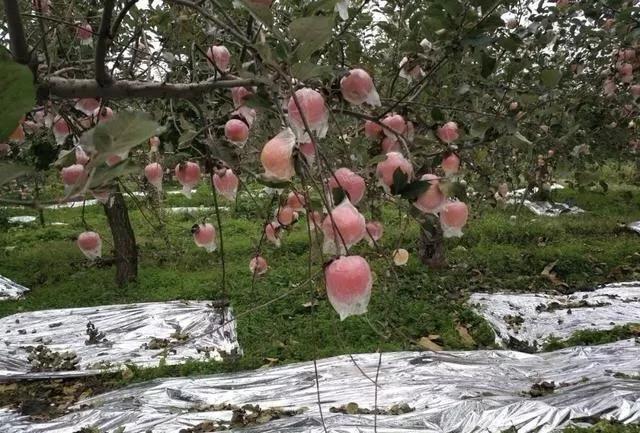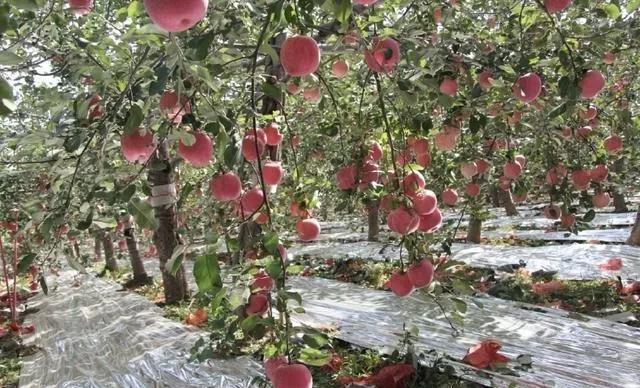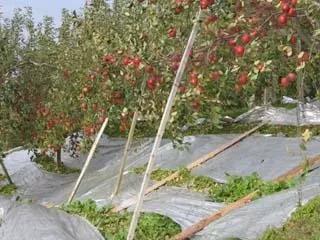Apple garden reflective film needs to pay attention to these problems
When the apple matures, the reflective film is spread along the fruit trees, which can significantly improve the color of the inner sorghum fruit, making it bright and full of red fruits. For a variety of good orchards, the combination of reflective film technology with orchard, fruit thinning, bagging, leaf picking, fruit transfer and other orchard management techniques can produce a large, all red, pollution-free, export-oriented quality. Fruit, the benefits are significantly improved. The following is an introduction to the reflective film technology of Apple Garden:
Film selection
At present, there are many reflective film manufacturers on the market, and the quality of the products is not good. The general quality is better. The double-sided composite film of polypropylene, polyester aluminum foil and polyethylene material has good flexibility, high reflectivity and anti-oxidation. Strong ability to use for more than 5 years.
Garden selection
The filmed orchard must be ventilated and light-transparent, the orchard is not sloppy, and there is less crossover between rows. For orchards with poor ventilation and light transmission conditions, orchards, and serious inter-row handover, the effect of laying reflective film is poor, and it is not suitable to use this technology.
Filming
The first is the strict filming standard: when laying the reflective film, it should be high inside and low. This allows rainwater to flow between the rows to prevent the film area from affecting the reflective effect. The film should not be used with soil, and the film surface should not be pulled too tightly to prevent the film from shrinking and tearing when the temperature is lowered. Secondly, the film is strictly laid, and the fruit begins to be colored and harvested after the apple is picked from the bag, and should be placed tightly inside and outside the tree plate.

Supporting technology
In order to increase the rate of full red fruit, the reflective film should be combined with other management techniques such as apple fruit bagging, fruit picking, fruiting, autumn pruning, etc. to increase the use of reflective film, thus producing higher quality high-end products. apple.
The total amount of branches is suitable: especially the base of the crown should not be too dense and keep a distance of 30~50 cm from the ground. The amount of branches per acre is stable between 60,000 and 80,000, and there is 1/3 of the shadow area under the canopy.
Picking leaves: picking leaves within 1 month before harvesting (after bag picking), the total number of leaves picked is not more than 30%~50% of the total leaf volume of the whole tree, which has no bad tree potential and yield in the next year. influences.
Fruit transfer, fruit: In order to fully color the fruit, the sun-colored face of the fruit is turned to the shade, and the shaded face is turned to the sun; in addition, the fruit branches and fruits in other directions are sagged downwards, so that the face is down, The end of the coloring.

Precautions
Adjusting the amount of dense planting branches: In the orchard with dense canopy, poor light transmission and serious dense planting garden, the color enhancement effect of the reflective film is very poor. Therefore, this kind of garden should adjust the amount of branches by thinning. Also pay attention to the choice of terrain and direction. The reflective effect of the film, the slope is better than the flat, and the north-south direction is better than the east-west direction.
Regularly leveling and cleaning the reflective film: In case of wind and rain, the film scraped off by the wind will be leveled again, and the dirt and leaves on the film will be cleaned in time to ensure the reflective effect of the film.
Finally, the leaves, clods, etc. on the reflective film are cleaned before harvesting, the solids are removed, the film is carefully rolled up, washed with water, dried, and stored in a non-corrosive environment for the next year. For reuse, the stored reflective film can be used for 3 to 4 years.


